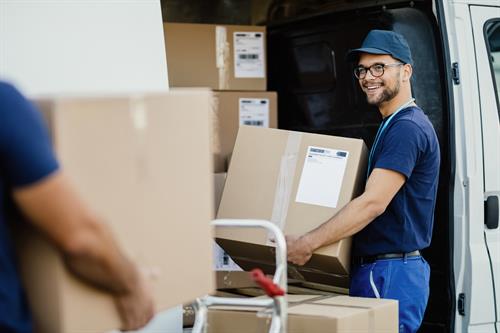
Knowing how and why your employees are getting injured can help you put a plan in place to decrease the number. A little research is required.
Statistics from our Claims Department help us uncover injuries occurring on the job. More than half of all injuries reported were a strain, sprain or tear.
What is the most common cause of those strains, sprains or tears? Lifting! That is good news as there are simple techniques your team can use to lift safely and reduce their injuries.
Before the lift:
- Stretch and warm up before lifting. Limber muscles are less likely to pull or tear.
- Test the weight by moving a corner of the object and decide whether you can handle it alone or if you need help.
- If possible, divide a heavy load into several smaller ones.
- Make sure you have enough room to lift safely.
- Inspect your intended path of travel for obstacles or other possible hazards. Make sure you have a clear path, can see where you are going and have a clear area to set it down.
- If possible, avoid walking on slippery, uneven surfaces while carrying any load.
- Don’t rely on a lifting belt to protect your back. When used improperly, they can actually damage your back.
- Position yourself so that you do not have to stretch to lift the load.
- If a package is above your shoulders, tilt the package in a way to minimize lifting above your head, where applicable.
- Do not reach with your arms outstretched to carry any measurable weight. This decreases the optimal carrying weight and increases the risk of injury to the shoulders and back.
During the lift:
- Get a firm footing. Stand with your feet close to the object and center yourself over the load.
- Place your feet shoulder width apart with one foot slightly forward of the other.
- Bend at your knees, not your waist, to get your legs ready to support the load. This is the single most important part of lifting.
- Grip the object firmly with the palms of your hands around the corners of the object.
- Let your leg muscles do the work. They are stronger than any other muscle in your body.
- Straighten your legs to lift straight up in a slow, smooth motion.
- For greater strength and stability, lift and carry the object near your waist.
- Move your feet when you change directions. Turning with your upper body while carrying your load causes strains.
- Do not arch your back. This makes the nerve roots open to pinching and causes strains in weaker muscles.
- Bend your knees again as you lower the load.
- Take small breaks between lifts if you are lifting a number of items.
Lessons Learned
Two recent incidents put a focus on less common, but traumatic injuries.
A driver was making a delivery and forgot to put the van in park when he shut off the engine. After finishing the delivery, the driver was unable to start the van as it was still in drive. Thinking there was a mechanical issue, the driver crawled under the front of the van. The van rolled forward dragging the driver who sustained traumatic injuries, was in ICU for more than two weeks and passed away from his injuries.
- Lessons learned – It may seem obvious, but always make sure the van is in park when making a delivery. When parking, turn the wheels toward the curb so that the van does not move much in a rollaway situation.
A driver was traveling 45 MPH on a country road. The door was open and the driver was not wearing a seatbelt. The driver lost control of the van and was either thrown or jumped out of the moving vehicle. He sustained serious injuries to his leg and was transported via ambulance to the hospital. He had multiple surgeries to repair his leg and has not been able to return to work in more than five months.
- Lessons learned – Not wearing a seatbelt just one time can cause a life altering tragic event. Please make wearing a seatbelt a core priority in your business and let your drivers know how important it is to you and your drivers’ safety.
Categorized in:
-
Workplace Safety
-
Workers Compensation
-
Weather Conditions
-
Transportation Safety
-
Injury Prevention
ClickToAddCategories
No categories have been created yet.
Community
Company Updates
Driver Recruitment
Investor News
Transportation Safety
Claims
Driver Management
Driving Techniques
Distracted Driving
Seasonal Driving Tips
Sharing the Road
Health & Wellness
Injury Prevention
Regulations
Security & Cargo Theft
Vehicle Inspections
Weather Conditions
Workplace Safety
Workers Compensation
Done